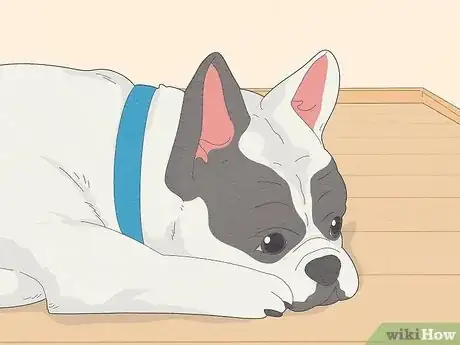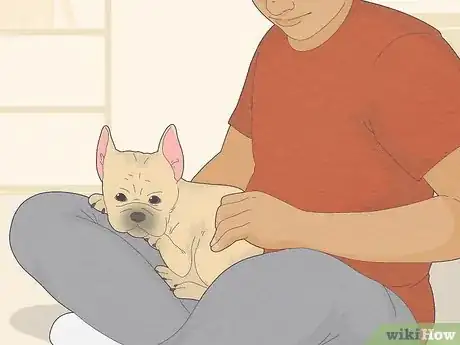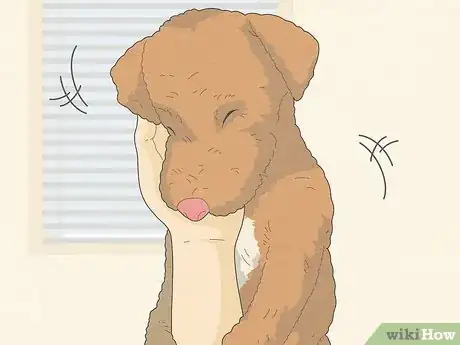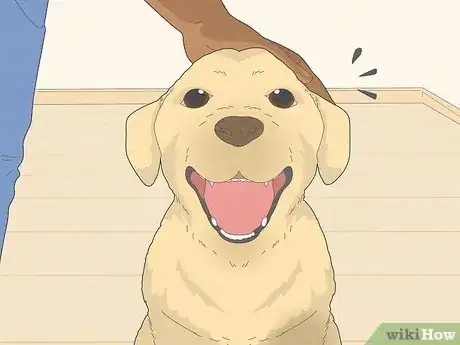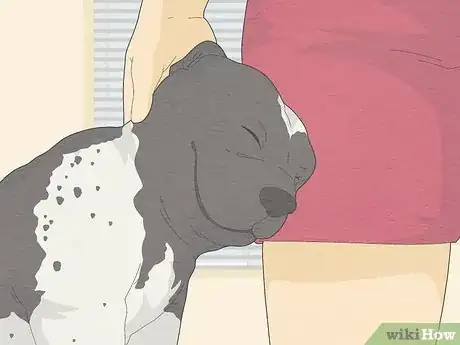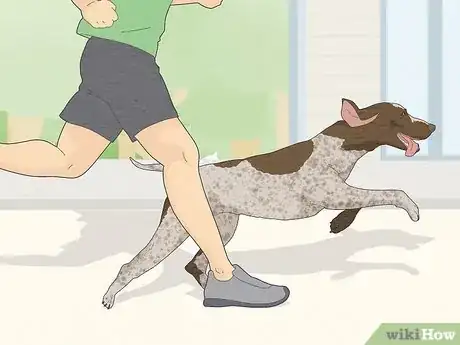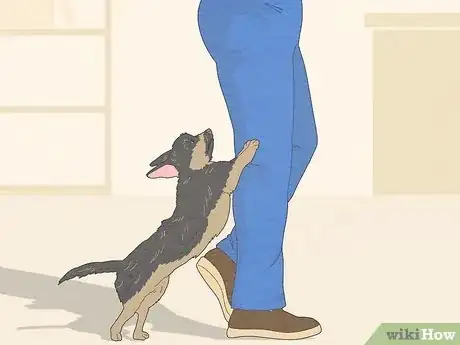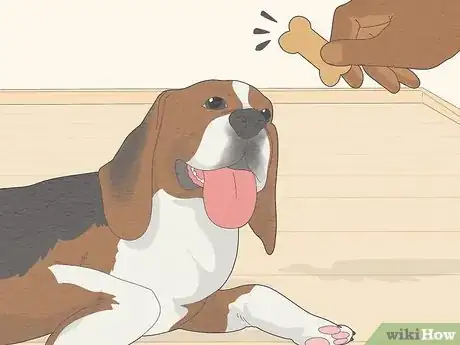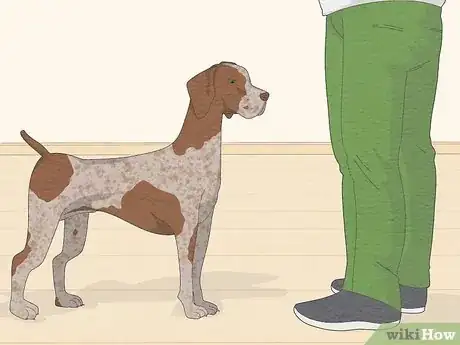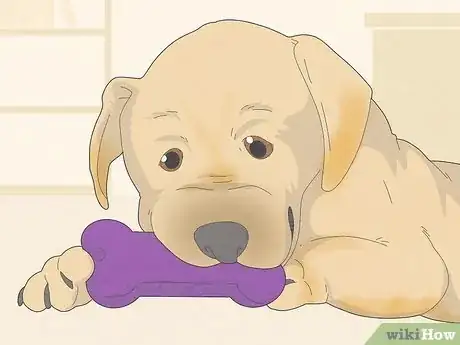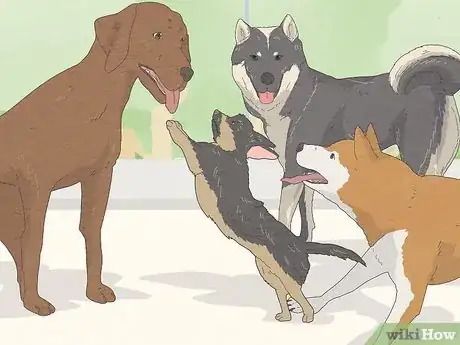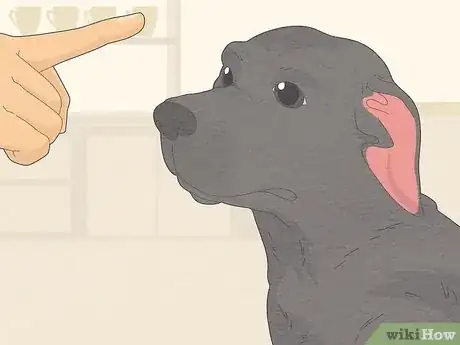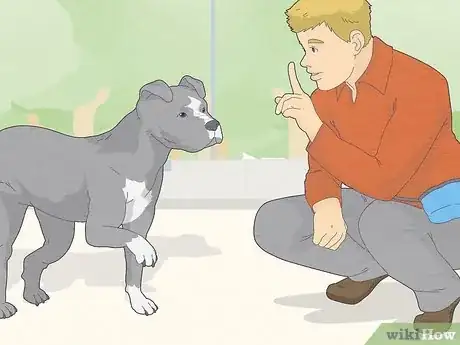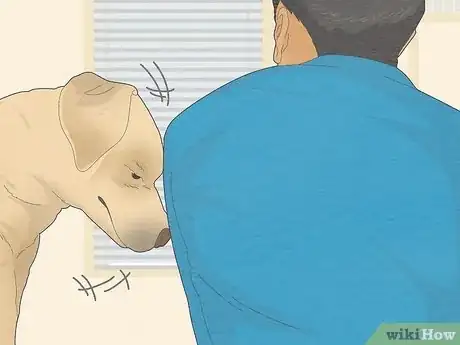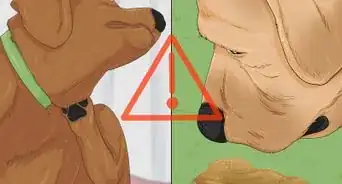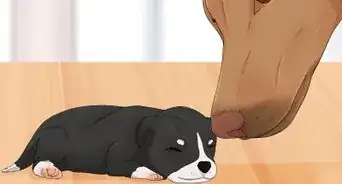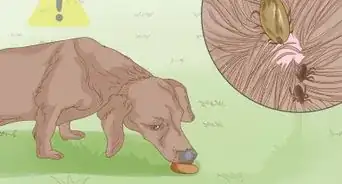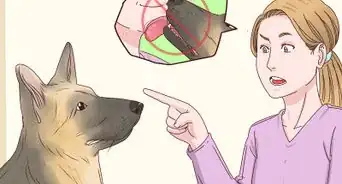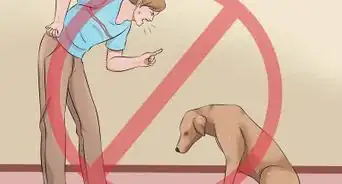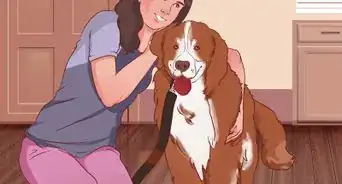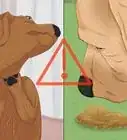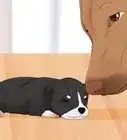This article was co-authored by Brad Greene. Brad is a Certified Professional Dog Trainer (CPDT-KA) and a Fear Free Certified Professional. He is the owner of Fearless Dogs, which is based in the Bay Area of California and has a 5-star rating. Brad specializes in helping clients and their dogs work through challenges using effective and humane behavior change methods, enabling their relationship to thrive. His greyhound, Asher was featured in Greyhound Rescue’s 2022 calendar.
There are 13 references cited in this article, which can be found at the bottom of the page.
This article has been viewed 2,347 times.
Your dog may be your best bud, but everyone needs space and time to themselves too! A clingy dog can make it challenging to complete necessary tasks, enjoy quiet moments alone, or spend quality time with others in your life. Clinginess may signal an underlying issue that needs to be addressed, such as separation anxiety, though it can also simply be a behavior they have learned over time. Fortunately, "Velcro dogs" can be trained to be more independent. Keep reading to learn the causes of clingy behavior, how to address clinginess in your dog, and how to differentiate clinginess from separation anxiety.
Steps
Expert Q&A
-
QuestionWhat are symptoms of separation anxiety in dogs?
 Brad GreeneBrad is a Certified Professional Dog Trainer (CPDT-KA) and a Fear Free Certified Professional. He is the owner of Fearless Dogs, which is based in the Bay Area of California and has a 5-star rating. Brad specializes in helping clients and their dogs work through challenges using effective and humane behavior change methods, enabling their relationship to thrive. His greyhound, Asher was featured in Greyhound Rescue’s 2022 calendar.
Brad GreeneBrad is a Certified Professional Dog Trainer (CPDT-KA) and a Fear Free Certified Professional. He is the owner of Fearless Dogs, which is based in the Bay Area of California and has a 5-star rating. Brad specializes in helping clients and their dogs work through challenges using effective and humane behavior change methods, enabling their relationship to thrive. His greyhound, Asher was featured in Greyhound Rescue’s 2022 calendar.
Fear Free Certified Professional Dog Trainer Signs of separation anxiety include pacing, vocalizing, panting, and scratching at doors. Use a security camera to observe your dog for signs of stress when they're left alone; if you see signs of anxiety, contact a veterinary behaviorist or a certified separation anxiety trainer (CSAT) for help.
Signs of separation anxiety include pacing, vocalizing, panting, and scratching at doors. Use a security camera to observe your dog for signs of stress when they're left alone; if you see signs of anxiety, contact a veterinary behaviorist or a certified separation anxiety trainer (CSAT) for help.
Warnings
- Do not punish your dog for separation anxiety. This will only make them feel more anxious and worsen the situation.[36]⧼thumbs_response⧽
- While some dogs do very well in their crate when left alone, do not introduce a crate as a response or treatment for separation anxiety. Anxious dogs not comfortable with a crate may injure themselves trying to escape.[37]⧼thumbs_response⧽
Things You’ll Need
- Dog bed
- Chew toy
- Stuffed animal toy
- Puzzle toy
- Dog food or dog treats
Expert Interview
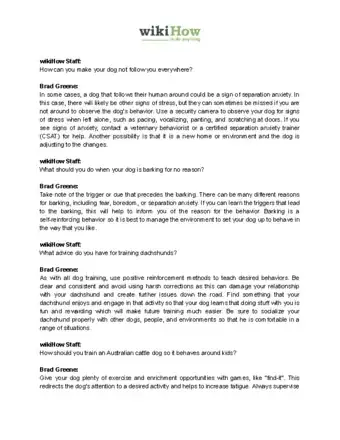
Thanks for reading our article! If you'd like to learn more about pet training, check out our in-depth interview with Brad Greene.
References
- ↑ https://www.thekennelclub.org.uk/health-and-dog-care/health/health-and-care/a-z-of-health-and-care-issues/why-does-my-dog-follow-me-everywhere/
- ↑ https://www.thekennelclub.org.uk/health-and-dog-care/health/health-and-care/a-z-of-health-and-care-issues/why-does-my-dog-follow-me-everywhere/
- ↑ https://www.akc.org/expert-advice/advice/why-does-my-dog-follow-me-everywhere/
- ↑ https://www.thekennelclub.org.uk/health-and-dog-care/health/health-and-care/a-z-of-health-and-care-issues/why-does-my-dog-follow-me-everywhere/
- ↑ https://www.thekennelclub.org.uk/health-and-dog-care/health/health-and-care/a-z-of-health-and-care-issues/why-does-my-dog-follow-me-everywhere/
- ↑ https://www.thekennelclub.org.uk/health-and-dog-care/health/health-and-care/a-z-of-health-and-care-issues/why-does-my-dog-follow-me-everywhere/
- ↑ https://indoorpet.osu.edu/dogs/aging_pets/cds
- ↑ https://www.sfspca.org/resource/attention-seeking/
- ↑ https://www.akc.org/expert-advice/advice/why-does-my-dog-follow-me-everywhere/
- ↑ https://www.akc.org/expert-advice/training/bored-dogs-how-to-recognize-doggy-boredom-and-help/
- ↑ https://www.akc.org/expert-advice/training/bored-dogs-how-to-recognize-doggy-boredom-and-help/
- ↑ https://www.akc.org/expert-advice/training/bored-dogs-how-to-recognize-doggy-boredom-and-help/
- ↑ https://www.sfspca.org/resource/attention-seeking/
- ↑ https://www.thekennelclub.org.uk/health-and-dog-care/health/health-and-care/a-z-of-health-and-care-issues/why-does-my-dog-follow-me-everywhere/
- ↑ https://news.vet.tufts.edu/2020/04/how-to-stop-attention-seeking-behavior/
- ↑ https://www.sfspca.org/resource/attention-seeking/
- ↑ https://www.aspca.org/news/home-tips-keeping-your-pets-busy-and-engaged
- ↑ https://www.akc.org/expert-advice/advice/why-does-my-dog-follow-me-everywhere/
- ↑ https://www.thekennelclub.org.uk/health-and-dog-care/health/health-and-care/a-z-of-health-and-care-issues/why-does-my-dog-follow-me-everywhere/
- ↑ https://www.akc.org/expert-advice/training/bored-dogs-how-to-recognize-doggy-boredom-and-help/
- ↑ https://www.animalhumanesociety.org/news/brain-games-dogs
- ↑ https://www.thekennelclub.org.uk/health-and-dog-care/health/health-and-care/a-z-of-health-and-care-issues/why-does-my-dog-follow-me-everywhere/
- ↑ https://www.akc.org/expert-advice/training/bored-dogs-how-to-recognize-doggy-boredom-and-help/
- ↑ https://news.vet.tufts.edu/2020/04/how-to-stop-attention-seeking-behavior/
- ↑ https://www.thekennelclub.org.uk/health-and-dog-care/health/health-and-care/a-z-of-health-and-care-issues/why-does-my-dog-follow-me-everywhere/
- ↑ https://www.aspca.org/pet-care/general-pet-care/behavioral-help-your-pet
- ↑ https://www.aspca.org/pet-care/dog-care/common-dog-behavior-issues/separation-anxiety
- ↑ https://www.akc.org/expert-advice/advice/why-does-my-dog-follow-me-everywhere/
- ↑ https://www.aspca.org/pet-care/dog-care/common-dog-behavior-issues/separation-anxiety
- ↑ https://www.akc.org/expert-advice/training/dog-separation-anxiety-how-to-stop/
- ↑ https://www.ncbi.nlm.nih.gov/pmc/articles/PMC7521022/
- ↑ https://www.aspca.org/pet-care/general-pet-care/behavioral-help-your-pet
- ↑ https://www.aspca.org/pet-care/dog-care/common-dog-behavior-issues/separation-anxiety
- ↑ https://www.akc.org/expert-advice/training/bored-dogs-how-to-recognize-doggy-boredom-and-help/
- ↑ https://www.ncbi.nlm.nih.gov/pmc/articles/PMC7521022/
- ↑ https://www.aspca.org/pet-care/dog-care/common-dog-behavior-issues/separation-anxiety
- ↑ https://www.ncbi.nlm.nih.gov/pmc/articles/PMC7521022/
